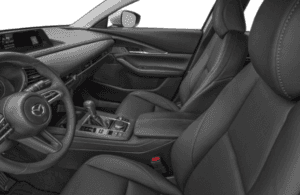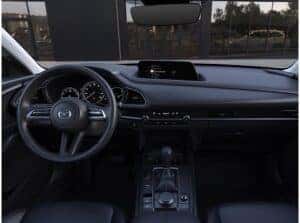 In the world of automobiles, some brands manage to carve a distinct niche for themselves by blending cutting-edge technology with an unwavering commitment to delivering an exceptional driving experience. Among these brands, Mazda stands out as a true enthusiast’s choice, with its unique design philosophy known as “KODO Soul of Motion” and the driving concept called “Jinba Ittai.” These two core principles form the heart and soul of Mazda’s approach to crafting vehicles that resonate with drivers on a profound level.
In the world of automobiles, some brands manage to carve a distinct niche for themselves by blending cutting-edge technology with an unwavering commitment to delivering an exceptional driving experience. Among these brands, Mazda stands out as a true enthusiast’s choice, with its unique design philosophy known as “KODO Soul of Motion” and the driving concept called “Jinba Ittai.” These two core principles form the heart and soul of Mazda’s approach to crafting vehicles that resonate with drivers on a profound level.
KODO Soul of Motion: Artistry in Motion
Mazda’s design language, KODO Soul of Motion, is more than just a design philosophy – it’s a manifestation of the brand’s belief that a vehicle should embody the vitality and dynamism of a living creature. Inspired by the movements of animals in the wild, KODO seeks to capture a sense of motion even when the vehicle is at a standstill. The result is a lineup of Mazda vehicles that exude elegance, energy, and a sense of purpose.
KODO design principles are not about creating overly complex or flashy exteriors. Instead, it emphasizes simplicity, balance, and a focus on essential elements. Sharp lines, sculpted surfaces, and a keen attention to proportions define the KODO philosophy. The goal is to create cars that invoke an emotional connection, not just by being visually appealing, but by conveying a feeling of anticipation and movement.
 Jinba Ittai: Horse and Rider as One
Jinba Ittai: Horse and Rider as One
While KODO captures the visual essence of Mazda vehicles, the Jinba Ittai concept is all about the driving experience itself. Translating to “horse and rider as one,” Jinba Ittai encapsulates the idea that the connection between a driver and their vehicle should be seamless and intuitive, much like the bond between a skilled rider and a responsive horse.
Mazda engineers and designers have worked tirelessly to create cars that respond to the driver’s intentions with precision. This involves refining everything from the car’s steering and handling to the feedback it provides through the pedals and controls. The goal is to create a harmonious synergy between the driver and the vehicle, allowing the driver to feel like they’re an integral part of the car’s performance.
 The Symbiotic Relationship
The Symbiotic Relationship
The fascinating aspect of Mazda’s approach is how KODO Soul of Motion and Jinba Ittai are interconnected. The expressive and dynamic designs resulting from KODO not only catch the eye but also set the stage for the emotional connection that Jinba Ittai aims to foster. The KODO design elicits a sense of movement even when stationary, and this same sense of movement is amplified when the car is in motion, reinforcing the feeling of being in sync with the vehicle.
Furthermore, the KODO design also contributes to the practical aspects of Jinba Ittai. The visibility-enhancing design elements and ergonomic considerations ensure that the driver feels more connected to the road and surroundings, further enhancing the driving experience.
 Driving Beyond Utility
Driving Beyond Utility
In a world where cars are often perceived as mere modes of transportation, Mazda’s KODO Soul of Motion and Jinba Ittai concepts remind us that driving can be an artful and immersive experience. They underline the idea that vehicles can evoke emotions, inspire connections, and offer a form of engagement that goes beyond mere utility.
For those who have the privilege of driving a Mazda, the marriage of these two principles transforms the act of driving from a mundane task into a journey of discovery and connection. With KODO Soul of Motion, Mazda designs vehicles that spark emotion even before the engine roars to life, and with Jinba Ittai, the driving experience becomes a captivating symphony of control and responsiveness.
In an automotive landscape that is constantly evolving, Mazda’s steadfast commitment to KODO Soul of Motion and Jinba Ittai reminds us that the essence of driving is not just about reaching a destination, but about savoring every moment of the journey.





